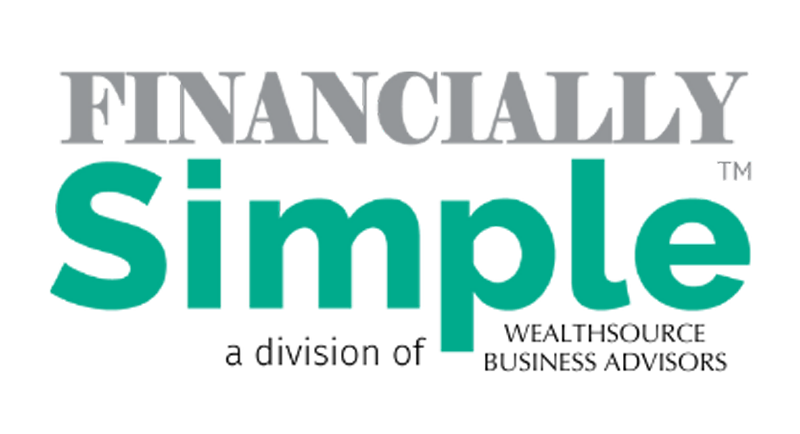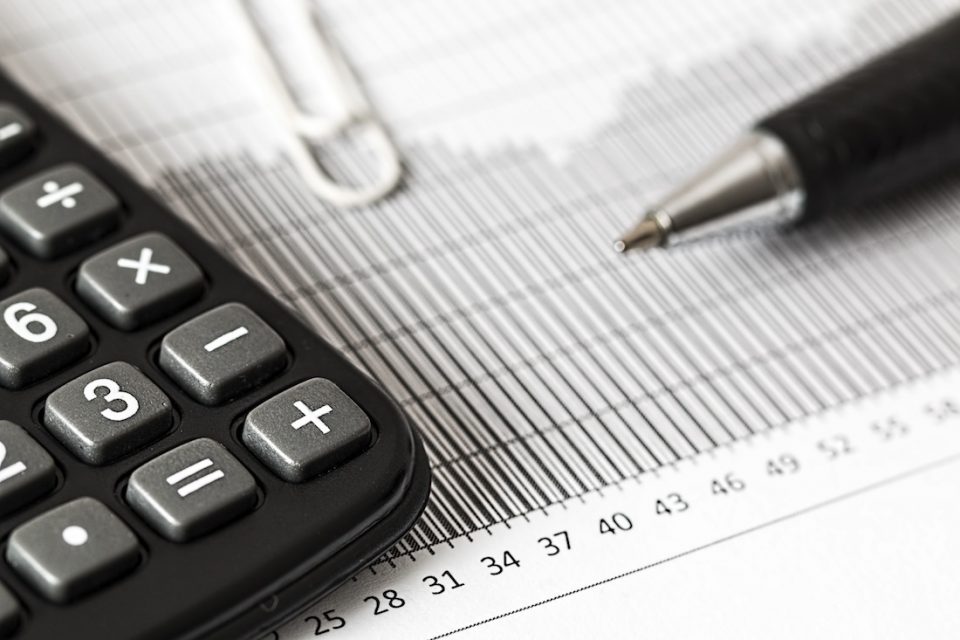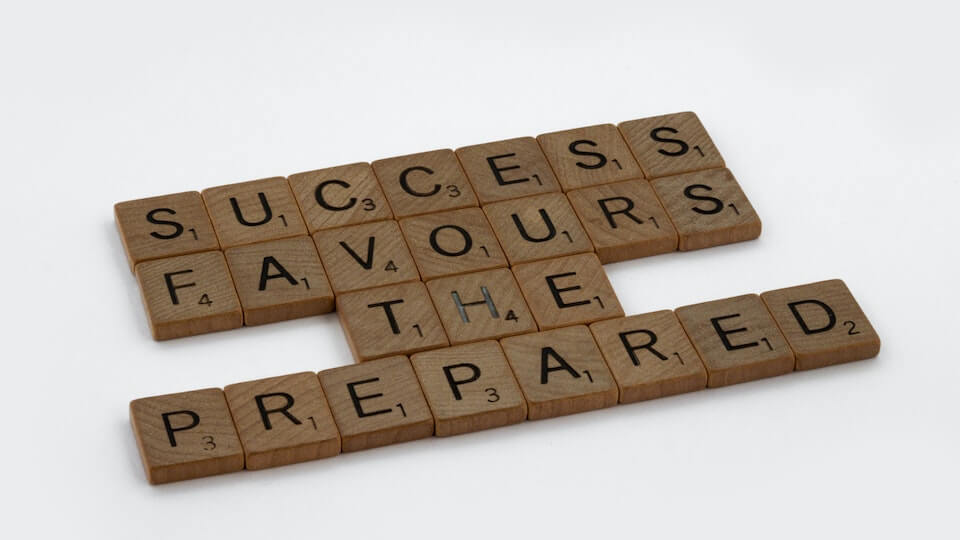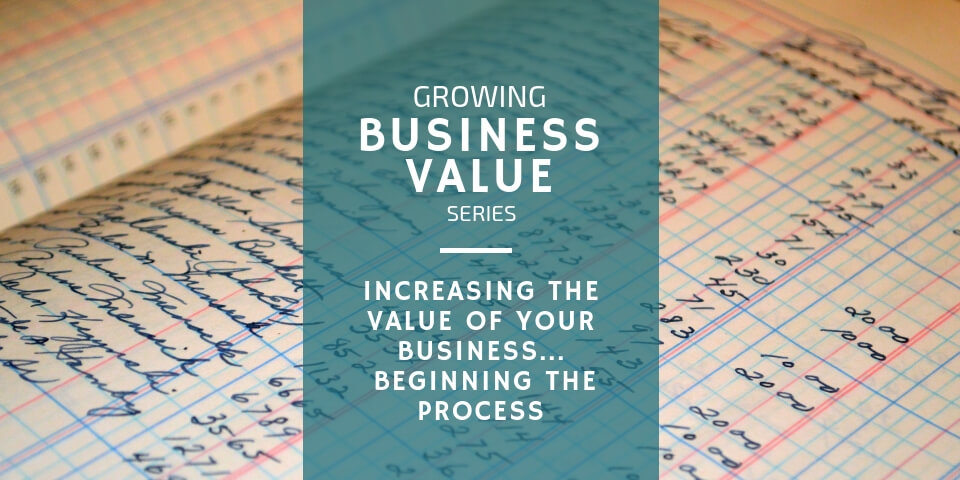
An Introduction to Increasing the Value of Your Small Business
November 12, 2018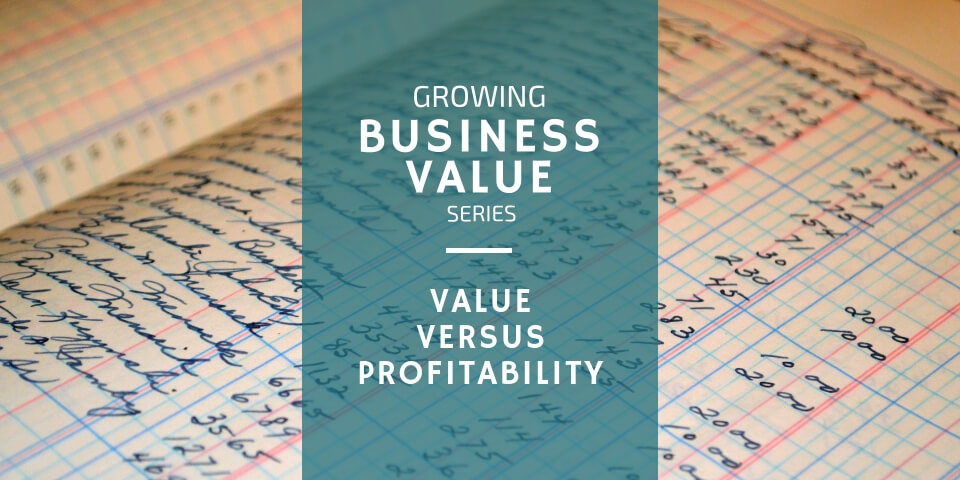
Value Versus Profitability… A Tale of Two Companies
November 15, 2018Personal and Business Debts That Affect Small Business Owners
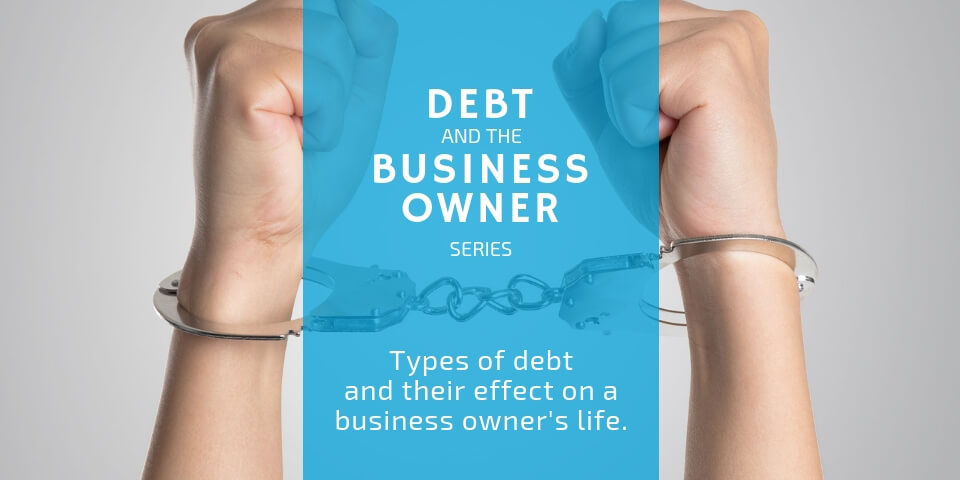
For most business owners, their first priority is typically their business, which you can most likely relate to. However, if you truly want to run your business at full capacity you MUST get your personal and professional debt under control! To accomplish that feat efficiently, you need to understand how personal and business debts affect you and your business.
There are multiple types of debt we interact with daily—remember debt is basically when you own money for a good or service. If you stopped and bought a latte with your credit card this morning, that is a debt until you pay your credit card bill. Debt encompasses everything from medical bills to mortgages. Today, I want to discuss a few of the most common debts that seem to cause the most problems and often hamper the growth of a business. I’ll break these down into three different categories—the good, the bad, and the just plain ugly. Let’s get started.
First of all, I want to stress something about debt. It is actually neutral and cannot really be classified as good or bad; however, the utilization of debt will typically bring about either a good or bad consequence—depending on the outcome of your usage.
Good Debt Defined
Debts that could possibly be classified as good are often the things you borrow money that have the potential to help you produce income. For example, if you took out a loan to fund the growth of your business, this could be categorized as debt with a prospectively good outcome. The plan is for that business to provide you with a stream of income for years to come.
Bad Debt Defined
The debts that often end up in the bad category are those that offer little to no return. Essentially, if you are borrowing money to fund your vacation, then you most likely couldn’t afford the vacation to begin with and while you have the memories, you’ll also be paying for it for years to come! My hope is you will learn to identify how the debt you are contemplating taking on will affect you.
Ugly Debt Defined
And for ugly debts—well those damage your net worth. These are the debts that keep you up at night, controlling your every waking moment. Anything from gambling debts to payday loans—which are typically short-term loans with extremely high-interest rates—fall into this group. The ugly debts can and quickly do suck the life right out of you.
Now that you know a little about our categories, let’s talk numbers…
Mortgage Debt
We will start with mortgages since they make up 67.63% of America’s debt. As a business owner, that may have been one of the various reasons you wanted to start your company, to make enough to buy or build your dream home. While that is a noble ambition, you most likely did not save enough cash to plunk down and outright purchase the house. The price of homes makes mortgages somewhat of a necessity. After all, you need a place to live, and owning a home is just another facet of the American dream. I’m not faulting you, however, we’re looking at $9.9 trillion of debt across the board in this country wrapped up in mortgages. The median down payment is a measly 5%, so essentially we are financing 95% of our homes.
Clearly, I’m not going to tell you that a mortgage is a bad investment. Sure there are other options, but for the most part, owning your home could be a wise move landing this in the good debt category. However, what is not a wise move, is taking on a larger mortgage than you can handle! That’s what led more than 8% of homeowners to default on their loans during the housing crisis of 2006-2009. Prior to the Great Recession, homeownership hovered around 69%. As of 2017, it was coming in at 63%.
While this debt does quite often end up in the good category if it isn’t handled properly a mortgage can quickly go south. Your mortgage is most likely one of your largest personal debts. Keep in mind, it can also play a major role in preventing you from securing credit for your business. Therefore it’s essential that you are careful when you take on mortgage debt.
Student Loan Debt
Another debt that could be deterring your business plans is actually one of the most hotly debated debts in America—student loans. These educational loans are actually the second-largest income drainer in America and come in a few different shapes and sizes. Student loans are meant to help those that cannot afford to pay for college upfront attain a degree. Of course, going to college and being a student is a worthy aspiration, so no one is condemning you for taking out these loans in order to better yourself. After all, those with a college education make an estimated $32,000 more than their high school graduate counterparts.
However, did you know that Americans are carrying $1.75 trillion in student loan debt? That’s a ton of money! While it’s spread out over 44 billion people, it’s still a staggering number nonetheless—especially when it is eating up around $393 of your monthly budget. Graduates in 2021 came out of college owing an average of $39,351 in student loan debt! Sadly, 15% of these highly educated folks are falling delinquent on these loans! You did not put in all that time starting your business to become someone that falls prey to this statistic.
Look, if you’re reading this and these numbers encompass you, it’s okay. We’re going to get it under control now. Perhaps we ramp up the payments and knock this baby out. Or maybe you are in a particular sector that actually qualifies for student loan forgiveness! Whatever, you may be facing with your student loans, I’m going to help you find a way to ensure they are not a liability to the future of your business. With that being said, student loans could definitely line up in the good debt column. However, if things get out of hand your business could suffer.
Auto Loan Debts
Another common debt wreaking havoc on the financial future of your business could be a car loan. Obviously, you need the car, we aren’t in the horse-and-buggy days anymore, I do get that. However, what you DO NOT NEED is a brand spanking new car costing $40,000! I’ll say it again! What you DO NOT NEED is a brand spanking new car for $40,000!
Car debt is one of those debts that can go from good to bad to even ugly really fast! Listen, cars are not assets. Loans on automobiles are really nothing more than a liability plain and simple. Assets are property that has the ability to bring you value in order to meet your debts if necessary. Cars do not do that. Yet, Americans owe almost $569 billion for their automobiles. Nearly half the country—a whopping 44%—relies on a loan in order to own a car. Additionally, that number has steadily increased since 2003.
In fact, the average loan for a new car in 2017 was $31,000, with the median payment topping $500! Auto loans are actually our third-largest debt coming in just under student loans. So next time before you sign on the dotted line to finance your dream car, stop and think about where that shiny hunk of metal stacks up with the rest of your financial goals. And if you’ve already made that commitment, then I’m going to offer you a tool to knock this out quickly.
Time to get to one of the Achilles heels of debt for Americans! Can you guess what it is? If you said credit card debt you’re a rock star and nailed it!
Credit Card Debt
Credit card debt is one of the murkiest of all debts. It can be good when used correctly, but when it goes bad, it’s so ugly, that people don’t just fall out of the ugly tree, they hit every branch on the way down!
However, let’s not throw the baby out with the bathwater. Like I already said, not all credit card debt is bad—especially when utilized properly in the business realm.
Here are some stats on the credit card debt crisis Americans face. The majority of homes in the US carry an average of $15,482 in credit card debt and unfortunately, it’s on the rise! That number is up 7% from 2016! With around 200 million people using credit cards, this translates to roughly $542 billion in unpaid balances each month! While using credit cards can be rewarding, that is only true if you pay off what you use every month. Otherwise, you are digging a hole that could take years to get out of.
The good news is 45% of homes do pay off their balances each month and only 28% carry a balance all year. However, those carrying a balance are giving away about $1,295 in interest per year based on the average each year with the average APR coming in at 14.99% That number is not exact but an estimate—because the payments do give you a little bit of a principal reduction.
If you’re in that 28% of Americans who carry a balance all year, DO you realize what that money could free you to do for your business or even your retirement?
Additionally, according to the 2017 Mid-Year Economic Report from the National Small Business Association, 29% of all small-business owners are using credit cards to meet their capital needs from time to time. While that’s not necessarily a bad thing, it can get out of control. It is also important to remember that corporate cards differ drastically from personal cards. They are not covered by the Credit CARD Act, a federal law protecting consumers from rate hikes at any reason or any time. You want to ensure that you are using credit cards in a manner that helps you and never hurts you, both professionally and personally!
Debts Specific to the Business Owner
We’ve hit the big three when it comes to consumer debts that could be hampering your business growth. Now let’s hit the highlights of a few other personal consumer debts you may encounter and need to you utilize from time to time.
Lines of Credit
Let’s first look at lines of credit or LOCs. These come in a couple of different forms, but home equity lines of credit or HELOCs are often the most popular. That is where you use the equity in your home to borrow money. Lines of credit, no matter the type, are like having a blank check to borrow up to a fixed amount of money as you need for whatever purpose you deem necessary. They are revolving—meaning you can pay them down or pay them off completely and keep borrowing from them. LOCs can be secured and unsecured. Obviously, the HELOC is a secured loan with your home being the collateral. The typical term for these types of debt is between five to ten years.
After the housing bubble burst, American’s pulled back on borrowing equity from their homes. However, that number has steadily been increasing. According to a TransUnion report, roughly 10 million homeowners will dip into the LOC market over the next four years. If you’re one of them, make sure it’s a debt you need and can take on.
Medical Debts
Medical debt is another huge one in America—so huge in fact that it is the number one reason most people file for bankruptcy according to The National Bankruptcy Forum. This is essentially where you owe for healthcare costs. Most of the time these are not debts you intentionally enter into. More often than not, you are not planning to have a heart attack or drive your car into an embankment. The easiest way to protect against this type of debt is to take care of yourself, carry medical insurance, and have an emergency fund in place—both for your business and yourself. If you battle something that keeps you out of work for three months, you’ll be glad you socked away the extra funds and you definitely don’t want to worry about keeping up with payroll while you’re out of commission.
Judgments
Another common debt is judgment. This is when you owe a creditor and they have taken legal action to recoup a portion or all of the debt you owe them. Or similarly, you could be facing a divorce decree if you’ve gone through a divorce. Now you find yourself owing a debt you did not owe before. Sadly, the statistics show that almost half of all marriages end in divorce. Hopefully, your marriage is still intact, but if it isn’t or you ever find yourself going down this path, you will know to tackle the divorce decree—which means the court says you owe your former spouse a certain amount of money. The last thing you want to happen is for a divorce decree or judgment to cost you your business because it tacked on debt you weren’t prepared to handle.
Back Taxes
Finally, the worst of all debts—and quite frankly the ugliest—is tax debt. You DO NOT want to owe the IRS. They can actually come in and seize your accounts. That’s where a good CERTIFIED FINANCIAL PLANNER™ coupled with an awesome CPA can help you minimize these liabilities as a business owner. Don’t discredit their worth! Hire them! You’ll be glad you did!
I really hope you aren’t wrapped up in these debts to the point of choking, but if you are, I’m going to help you formulate a plan to reduce them in a timely manner to get back on track to reaching your goals.
Debts Specific to the Business
Now, I’ve covered most of the personal debts that could cause hiccups in your business, but your business will also be incurring debts of its own. Two-thirds of all small businesses fail within the first two years according to Small Business Administration. If they make that milestone, then only half will last five years, and still yet, only a third cross the decade mark.
Do you know the number one reason these businesses fail? Cash Flow Problems— that’s right 82% fail because of cash flow problems. That doesn’t mean they aren’t making money. It could mean they aren’t making money in a timely fashion that meets their debts. Debt will always be the enemy of your business goals! Here’s a quick overview of the types of debt businesses draw from.
Business Line of Credit
First is the B-LOC. or Business Line of Credit. As I mentioned earlier, a line of credit is a revolving debt. I usually recommend these when cash flow is not uniform for a business. Why? Because life happens and you may not have enough cash for the what-ifs and you want to ensure your business bills are always covered. Just like a personal LOC or a HELOC, you pay back what you owe and can draw from it over and over.
Purchase Loans/Real Estate Loans
Another common debt for business owners is purchase loans. After all, you may not have enough capital to outright purchase a company, so you’ll need to finance that. The same goes for real estate loans. Your business needs a physical address and unless you can run it out of your home you may need money to buy a building.
Sometimes your business may need a loan to purchase equipment. I personally believe no debt is good debt when it comes to equipment loans. Equipment has a life expectancy, so if you do need to go this route to obtain a piece of equipment that you cannot outright buy, then you need to understand how to finance this type of loan to match the life cycle of your purchase.
Listen, debt matters. It matters in your personal life and it especially matters in your business life. Don’t get trapped in an ugly cycle that costs you everything you have worked so hard to achieve! Let’s work on how to get rid of the “bad” and “ugly” debt and learn to use the “good” debt in future posts.
